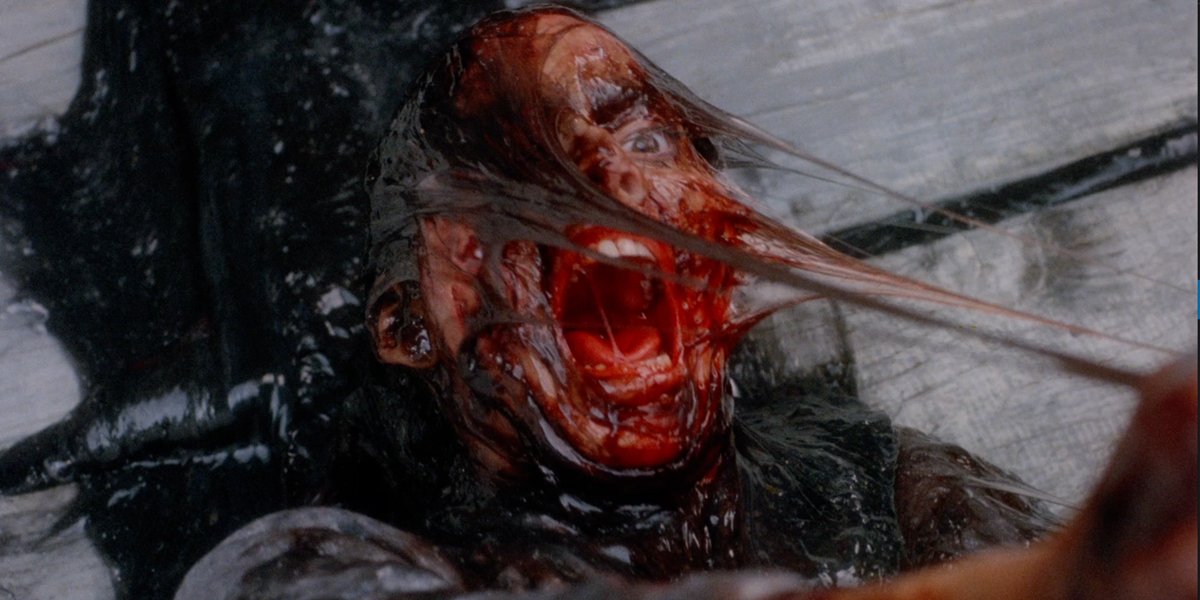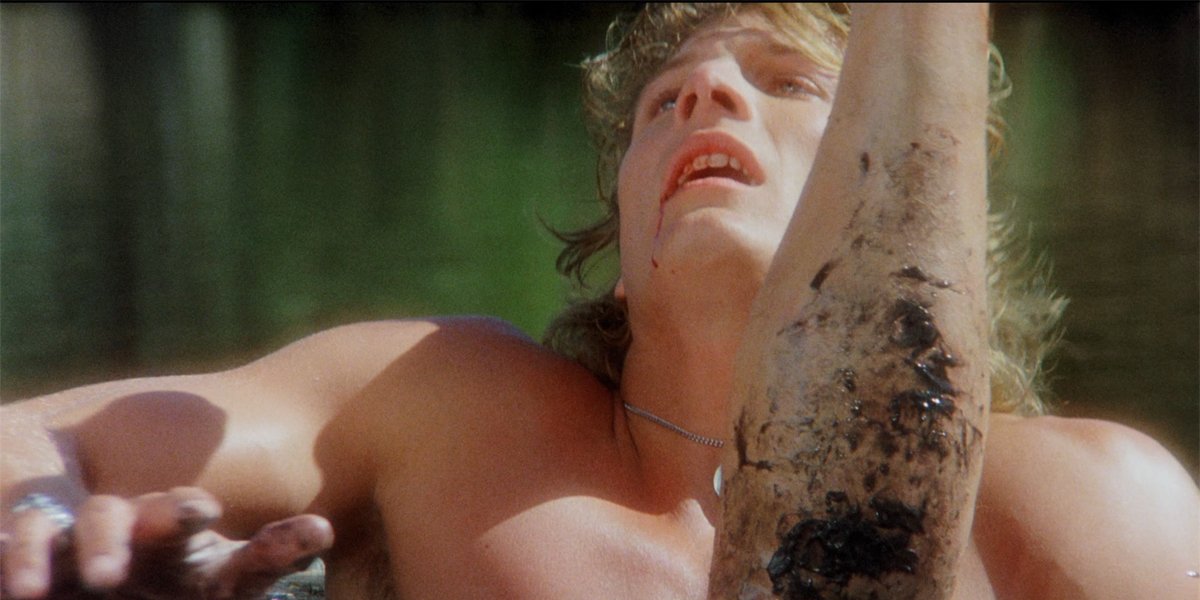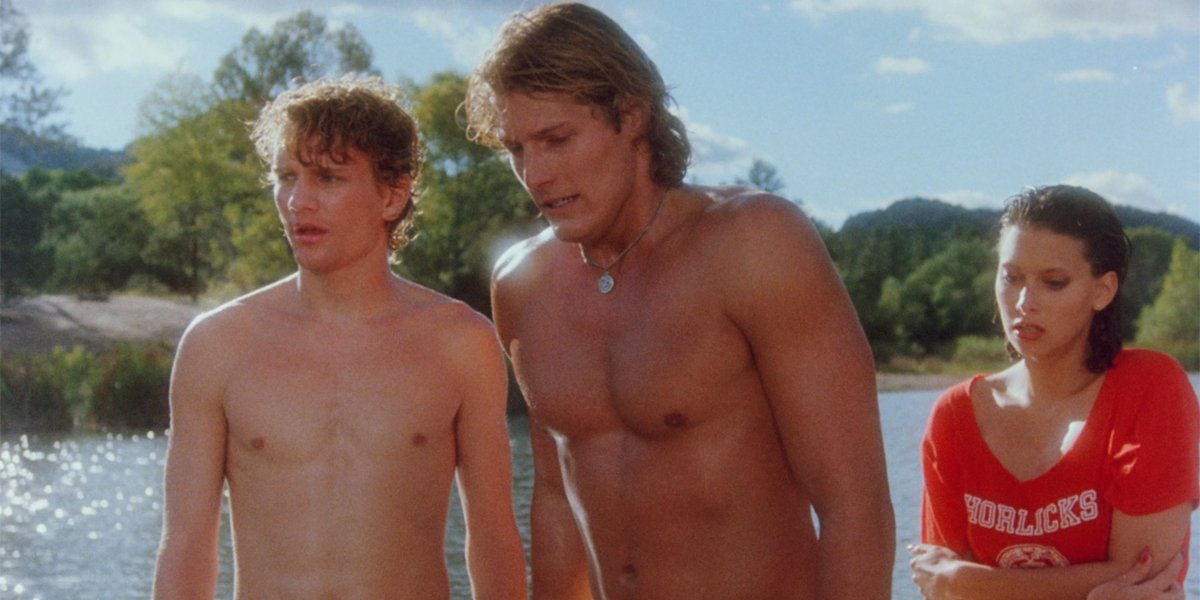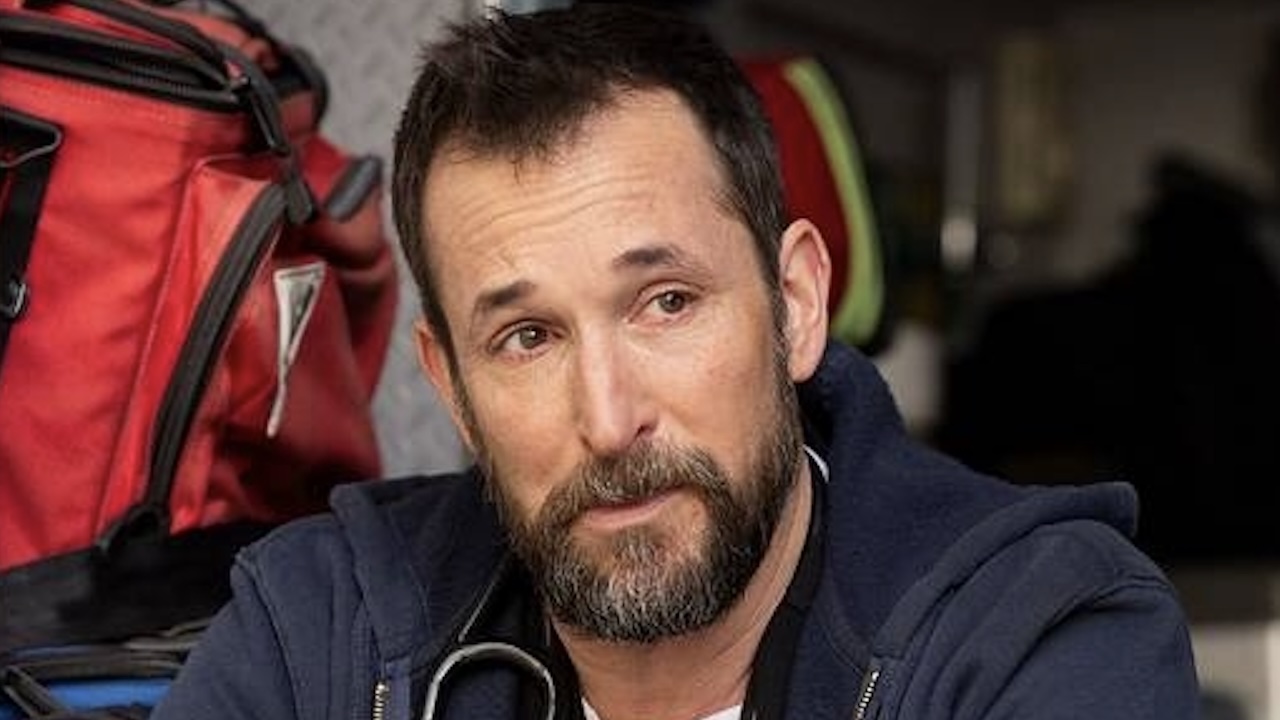Adapting Stephen King's The Raft: 1987's Creepshow 2 Floats A Gruesome Nightmare

Eleven years into his relationship with Hollywood, Stephen King’s experiences with filmmakers ran the gamut from friendly to antagonistic, but one individual that the author got along with famously was George A. Romero. As I noted a few weeks ago in my column about Creepshow, the two men first got together trying to bring The Stand to the big screen, and while that work didn’t end up yielding results, they had a blast working together on the 1982 anthology film.
Their stars crossed paths again in 1984 as Stephen King’s short story “The Word Processor Of The Gods” was used as source material for an episode of the George Romero-produced series Tales From The Darkside, but conversations also continued about doing a sequel to Creepshow. (According to Ian Nathan’s Stephen King At The Movies, the filmmaker was particularly proud of the fact that the first was his lone “number one hit.”) Ultimately other commitments prevented King and Romero from collaborating on Creepshow 2 the same way that they had on the original – which had them co-writing the script and Romero directing – but the film still got made.
King developed stories for the anthology that were then written as a screenplay by Romero and Lucille Fletcher (he also makes a brief cameo towards the end of the film). Michael Gornick, who was the cinematographer on Creepshow, was given the reins of Creepshow 2 as his feature directorial debut. Unexpected budget restraints unfortunately saw the plan for five tales of terror reduced to three, and while two of the remaining – "Old Chief Wood'nhead" and “The Hitchhiker” – are originals developed directly for the big screen by King, the movie notably features what is the only adaptation we’ve seen of “The Raft” from the 1985 collection Skeleton Crew.
Just as I only focused on “The Lonesome Death Of Jordy Verrill” and “The Crate” in my Creepshow piece, and “Quitters, Inc.” and “The Ledge” when looking back at Lewis Teague’s Cat’s Eye, this week’s Adapting Stephen King will zero in solely on “The Raft” in Creepshow 2, and take a look at how it compares to the source material and where it fits in the legacy of King on-screen. But first, let’s take a look back at the strange journey that the short story had getting into print.

What “The Raft” Is About
Stephen King’s books regularly feature an afterword written by the author to provide some larger context to the literary experience, and Skeleton Crew features a specialized version of that – namely a “Notes” section where King shares anecdotes about the shorts in the collection. “The Raft” is included among this group, and its origins are quite wild.
Originally titled “The Float,” the story was first written in the late 1960s when King was still years away from the financial success that came with the release of Carrie. Trying to pay the bills with his typewriter, he was able to sell it to the adult magazine Adam, but the deal was that he would only get paid (a sum of $250) if it got published.
A few months later, bizarrely enough, Stephen King found himself in legal trouble due to a revenge incident that saw him trying to illegally collect city traffic cones (one had damaged his car, and he decided to try and steal a bunch so that he could leave them in front of the police station). He was charged with petty larceny and fined $250, which was cash he didn’t have – and if he didn’t successfully come up with the money he was going to have to spend 30 days in the Penobscot County Jail.
Your Daily Blend of Entertainment News
That’s when he was exposed to what he refers to as a deus ex machina: three days after the judge’s ruling, Adam magazine sent him a check for $250, and King used that money to pay his fine.
Adding an extra wrinkle to this tale is that Stephen King never could find where “The Float” was published (he searched in multiple publications)… and then he accidentally lost the original manuscript. It wasn’t until 1981 when King was in post-production on a certain film that he decided that he would try and do a redraft. King writes in the Skeleton Crew notes,
I got to thinking about the story again in 1981, some thirteen years later. I was in Pittsburgh, where the final Creepshow editing was going on, and I was bored. So I decided to have a go at re-creating that story, and the result was 'The Raft.' It is the same as the original in terms of event, but I believe it is far more gruesome in its specifics.
This in mind, it seems utterly perfect that “The Raft” is included in Creepshow 2.
Interestingly blending elements of 1950s/1960s monster movies and 1980s slashers (with some environmentalist message thrown), “The Raft” tells the tale of four college students – Randy, Deke, Rachel, and Laverne – who decide one day in late fall to take a jaunt out to a lake where a raft has been left floating in the water. There is expectation of some sexy fun on a chilly day, but things take a turn for the horrific almost instantly.
Randy spots what appears to be a perfectly round black blob floating yards away, and becomes concerned when it appears to be consciously moving toward them. This turns out to be warranted concern, as the group discovers when Rachel gets caught in the oily patch and is dissolved and devoured.

How Michael Gornick’s Creepshow 2 Differs From “The Raft”
Given the short story’s simple premise, it’s not surprising in the slightest that Creepshow 2 doesn’t change much at all about “The Raft.” The setup and the characters are identical, and the movie does a surprisingly good job capturing the gruesome carnage that results when the floating blob gets ahold of one of the victimized college students. There are really only two big noteworthy alterations (not counting details like the conversation between the students happening in a car instead of an apartment), and they involve the monster and the ending.
In the case of the former, the deadly floating creature isn’t the perfectly round shape that it is in Stephen King’s story, but far more significant is the fact that he seems to lack one of its “abilities” in Creepshow 2. In the short, the carnivorous blob is reminiscent of an oil spill not only in its dark black coloring, but also because it creates pretty colors when refracting the light. This vibrant effect has the power to hypnotize the monster’s prey, lulling them into a trance so that it can strike.
This is a key detail to leave out of Creepshow 2, as it winds up, in a way, forcing a change to the ending. In the movie, Randy (Daniel Beer) makes a break for the shore while Laverne (Jeremy Green) is being devoured – but he doesn’t have that same opportunity in Stephen King’s version. Instead, he is left standing for hours and hours, as any time he sits down the vicious and viscous being threatens to suck him down through the boards like Deke (Paul Satterfield). Utterly exhausted, he contemplates if it’s possible that being hypnotized by the flashing colors will allow him to have a painless death while he is being eaten, and the story ends with him testing the hypothesis.

Is It Worthy Of The King?
On the whole, Creepshow 2 is categorically an inferior sequel. Of the eight total stories told in both the original and the follow-up, "Old Chief Wood'nhead" and “The Hitchhiker” rank at the bottom, and Michael Gornick’s film is lacking the pitch-perfect tone of its predecessor – which so brilliantly balances horror and hilarity. Just by the nature of it featuring three segments instead of five it registers as a less fun and diverse experience, and there’s also a particular magic missing with actor/make-up genius Tom Savini playing The Creep instead of the movie bringing back the ghoulish puppet.
All that being said, it’s a nice bonus that this column is specifically focusing on “The Raft,” because it’s far and away the best part of Creepshow 2, and is even fun to just watch as a special Stephen King short film (like a high budget dollar baby).
As alluded to earlier, the segment very much feels like it is a product of its era – fitting in perfectly with the slasher trend of the 1980s when sex and sin (and fun) meant gruesome death. The blob creature (which doesn’t get a real name in either the short story of the movie), doesn’t precisely have the same kind of imposing presence as Jason Voorhees or Freddy Krueger, and it looks more like a floating trash bag than it does an oily monster. At the same time, though, giggling at it perfectly sets you up to witness the kind of horror it can deliver, as Randy, Deke, Rachel, and Laverne all die ghastly deaths.
Calling “The Raft” an overlooked gem would be a stretch, but it is a well-made and faithful interpretation of the story as Stephen King originally wrote it (or, more accurately, as the second time he wrote it). There are some hardcore details in the short that just couldn’t be fully adapted at the time – such as the slow process of Deke being melted/dissolved/pulled through the cracks of the float – but Michael Gornick certainly shows plenty. In the end, the best thing I can say about it is that it is the best reason I can muster to recommend watching Creepshow 2.

How To Watch Michael Gornick’s Creepshow 2
Curious about now revisiting Creepshow 2 with all of this fresh new context in your brain? You’re in luck, as it is one of the Stephen King movies that is most easily accessible at the moment. If you have an Amazon Prime account you can stream the movie right this second, and the same goes for those of you with Sling TV. It’s also currently playing with ads on Tubi. Those of you looking to digitally buy or rent will find it available on all major platforms, and if you’re into physical media and trying to build the Ultimate Stephen King collection you’re definitely going to want to get the special edition release by Arrow Films.
Moving deeper into the year 1987, the next installment of Adapting Stephen King will be taking a look at another big first in this particular cinematic legacy: Paul Michael Glaser’s The Running Man, a.k.a. the first adaptation based on a book by King’s alter ego, Richard Bachman. Come back here to CinemaBlend on Wednesday to discover the origins of the cult classic Arnold Schwarzenegger movie, and click through using the banners below to find my previous features in this series.







Eric Eisenberg is the Assistant Managing Editor at CinemaBlend. After graduating Boston University and earning a bachelor’s degree in journalism, he took a part-time job as a staff writer for CinemaBlend, and after six months was offered the opportunity to move to Los Angeles and take on a newly created West Coast Editor position. Over a decade later, he's continuing to advance his interests and expertise. In addition to conducting filmmaker interviews and contributing to the news and feature content of the site, Eric also oversees the Movie Reviews section, writes the the weekend box office report (published Sundays), and is the site's resident Stephen King expert. He has two King-related columns.
